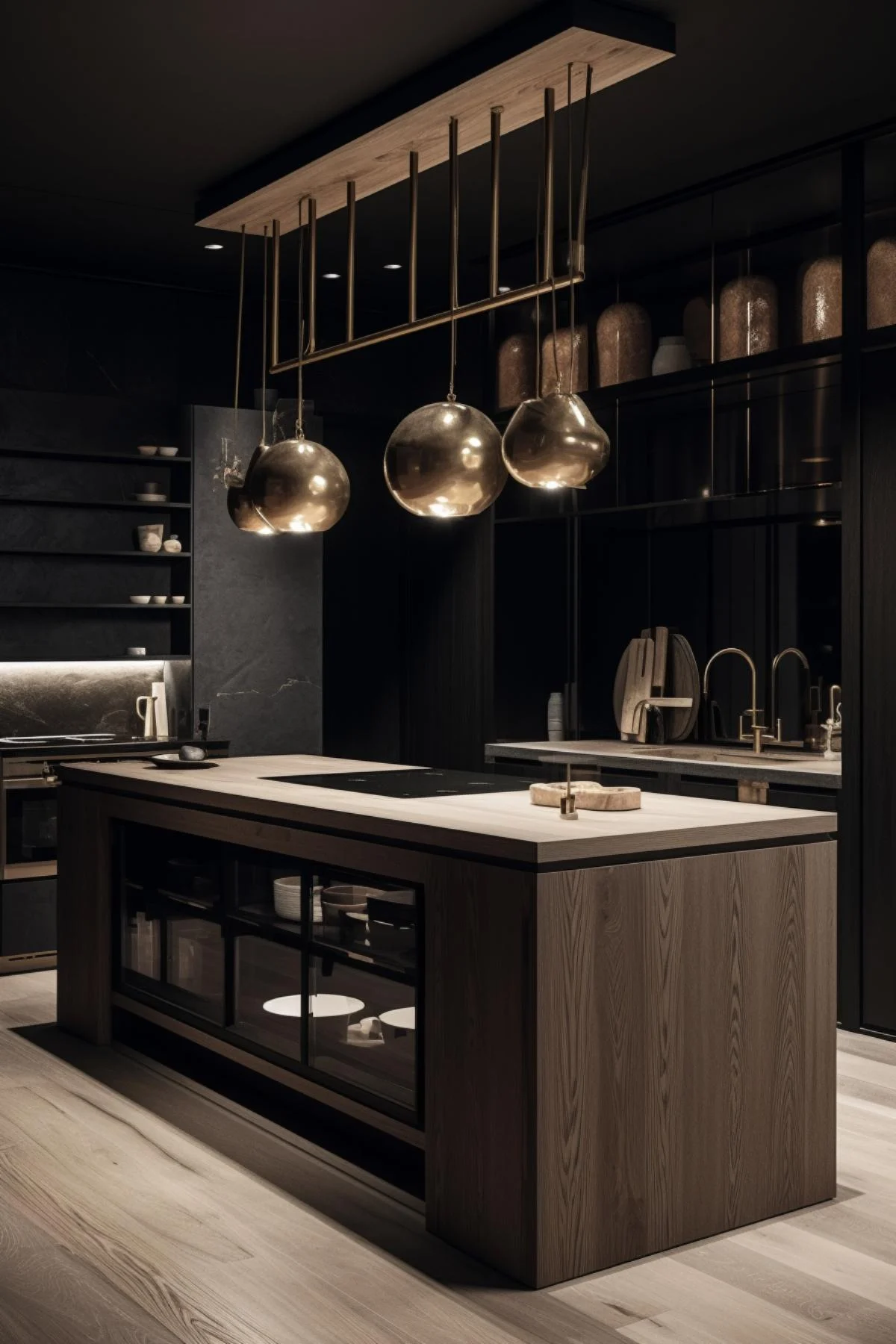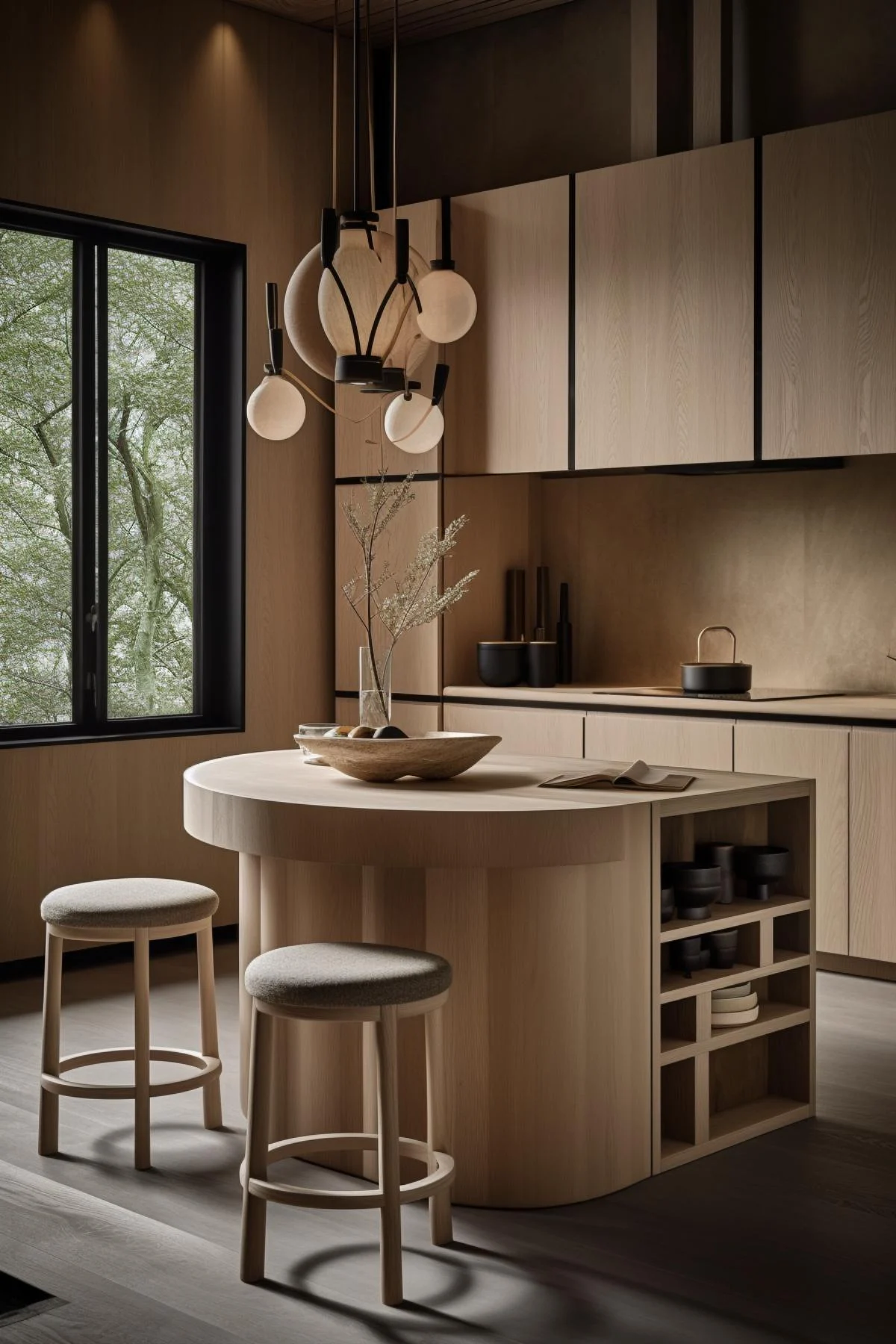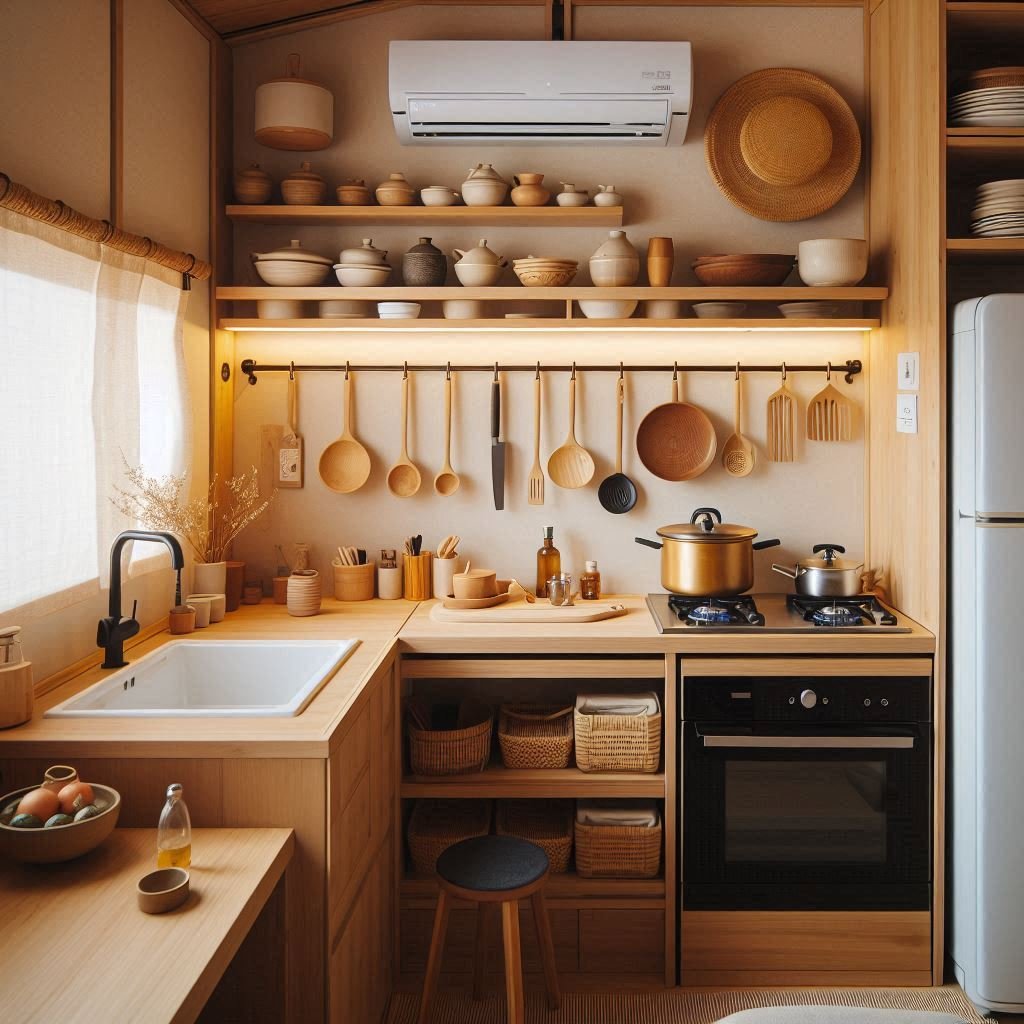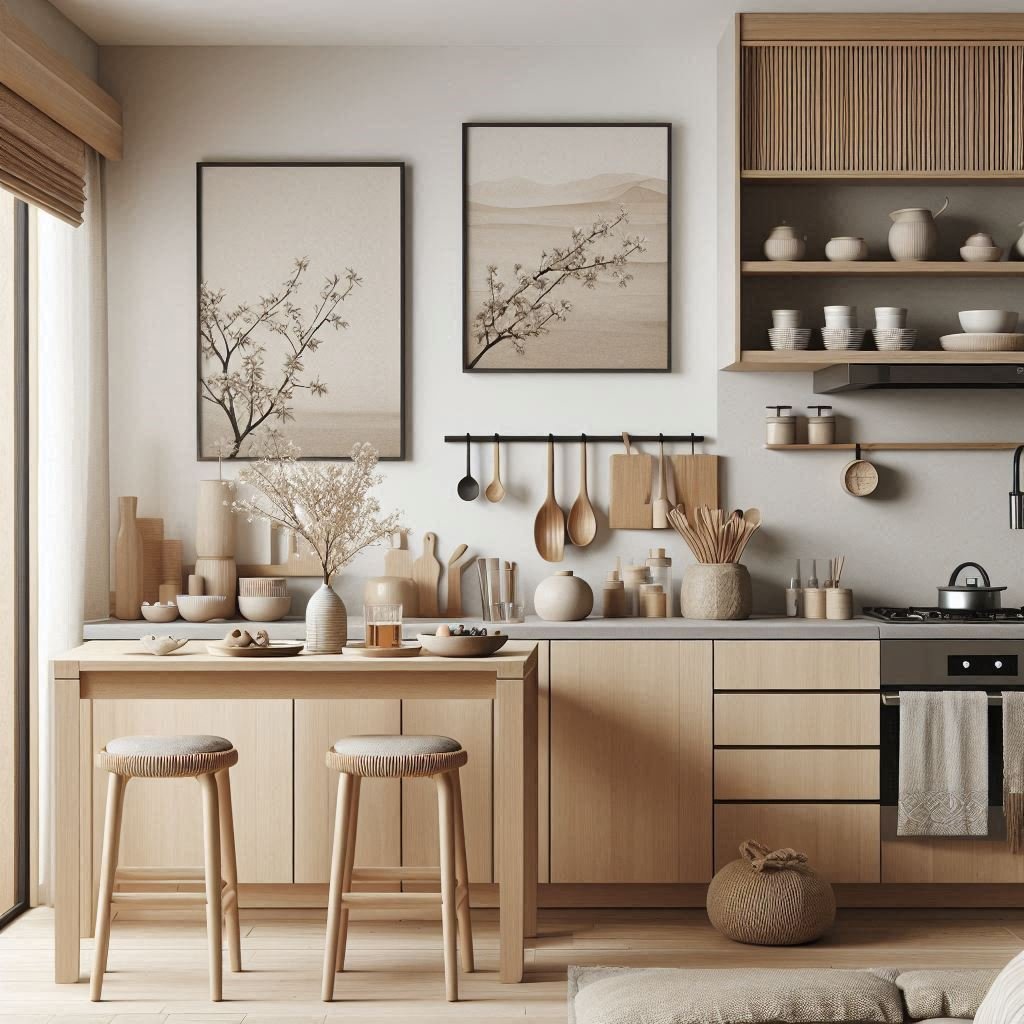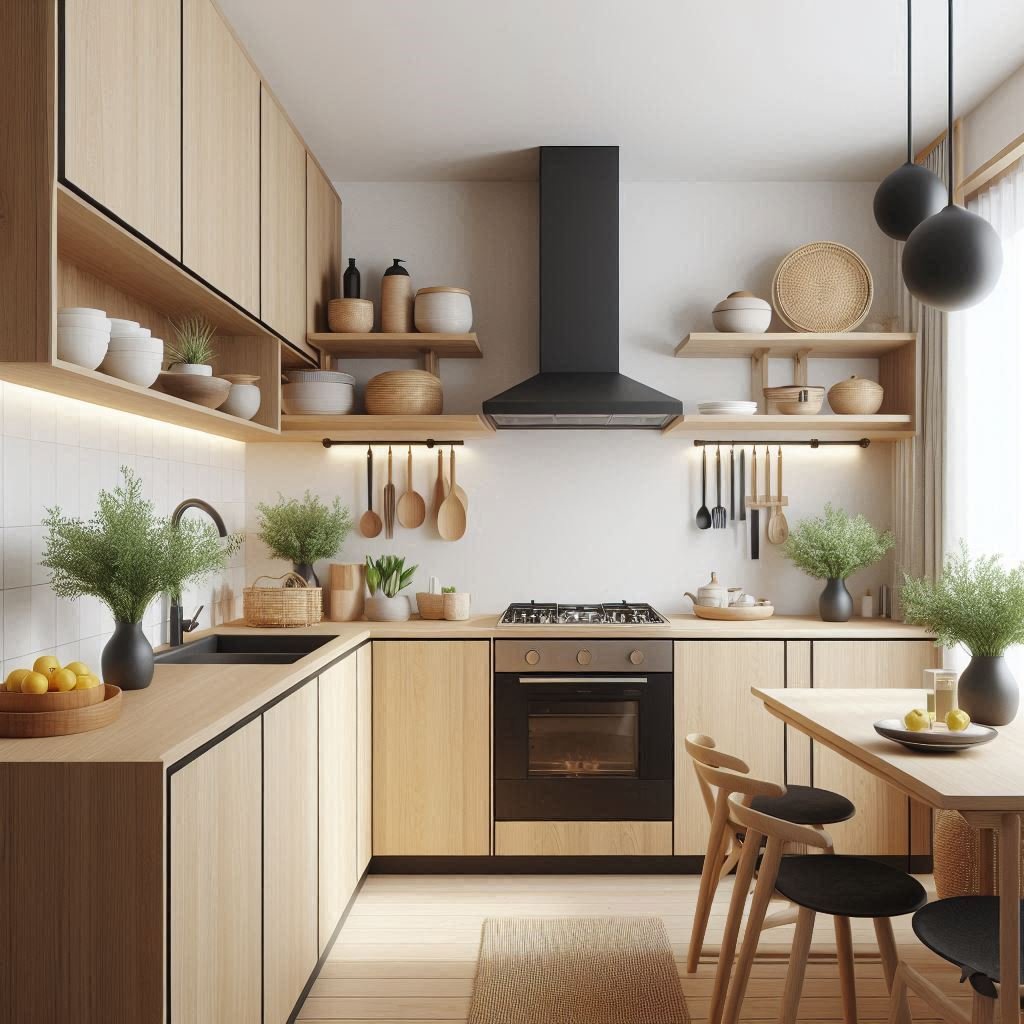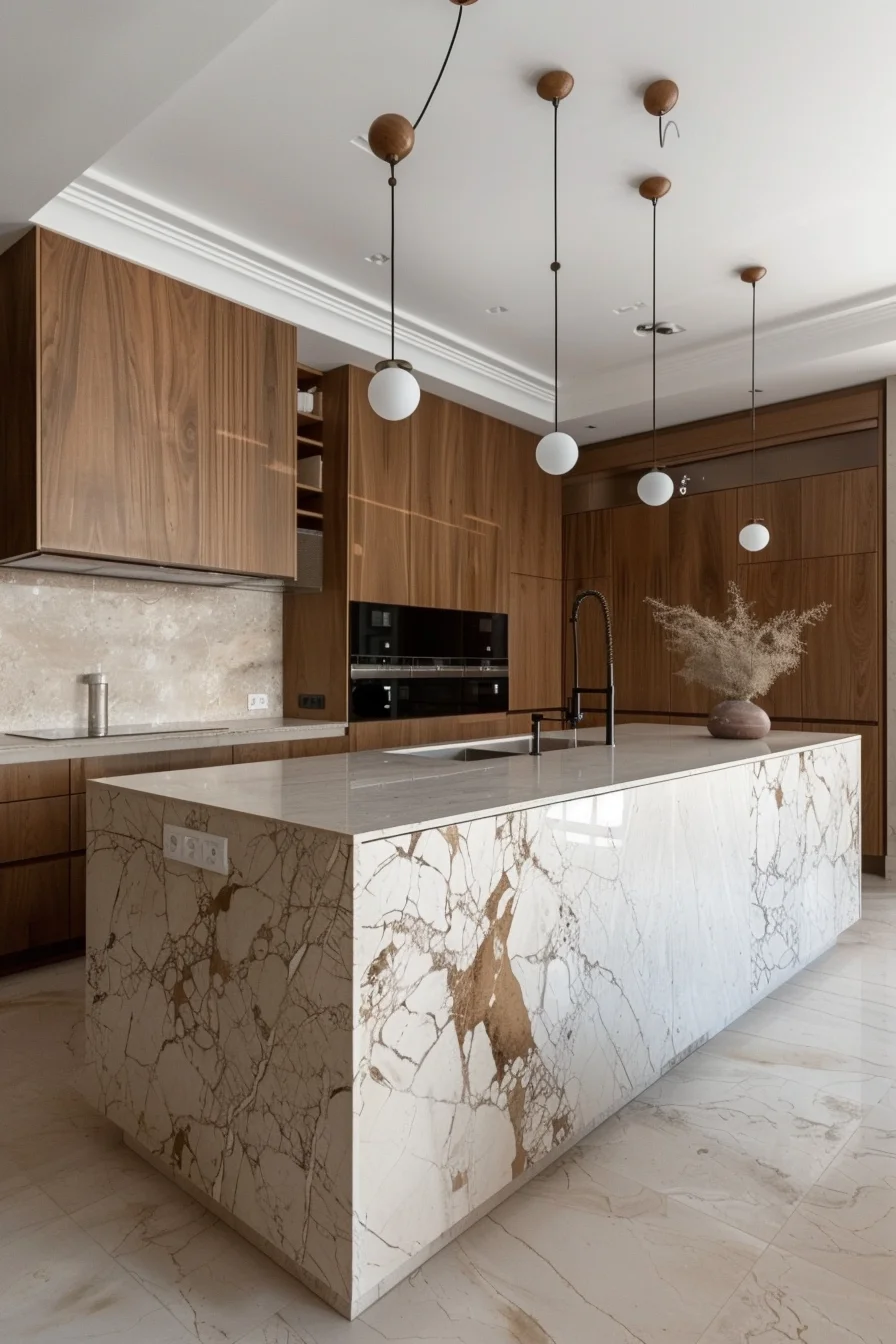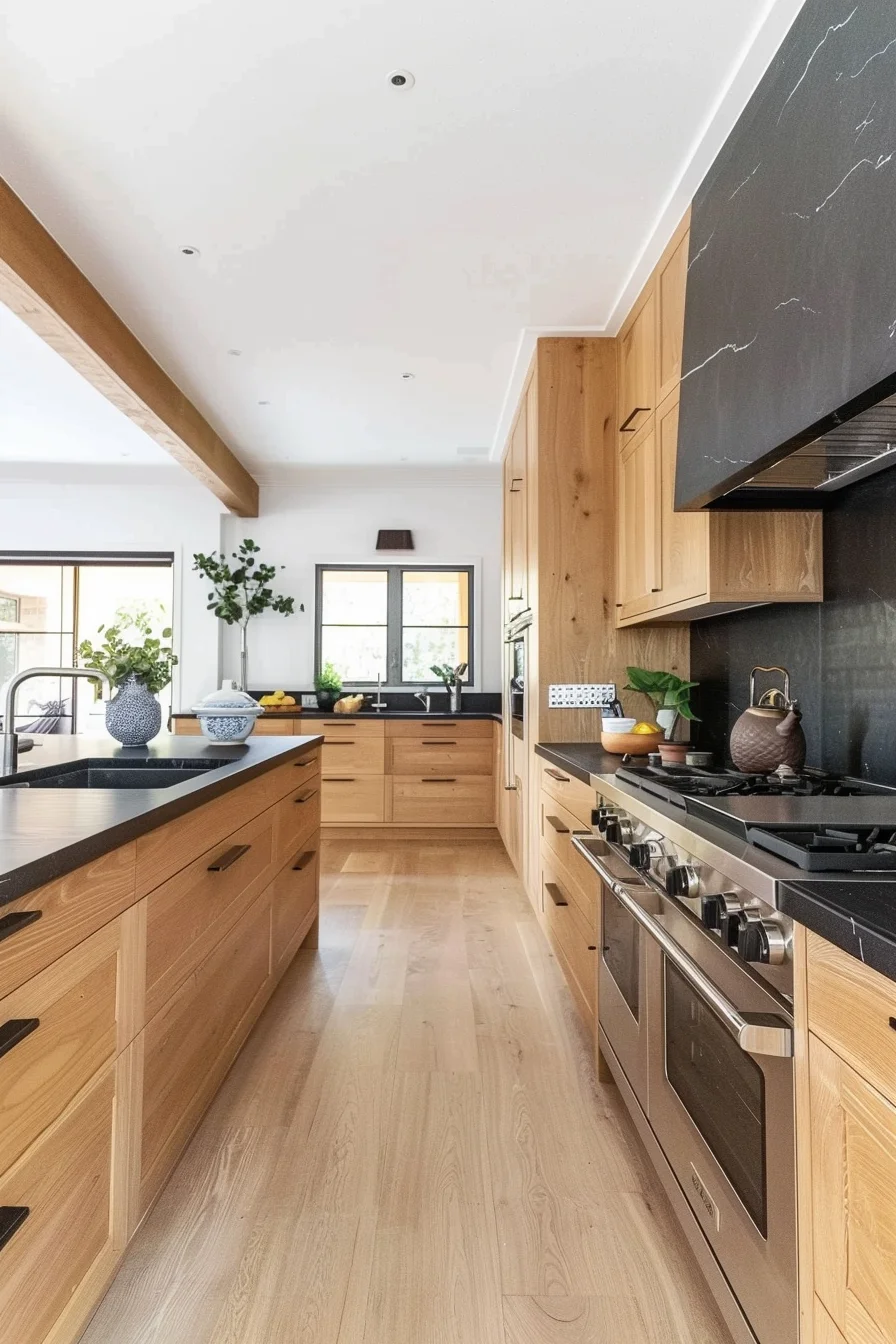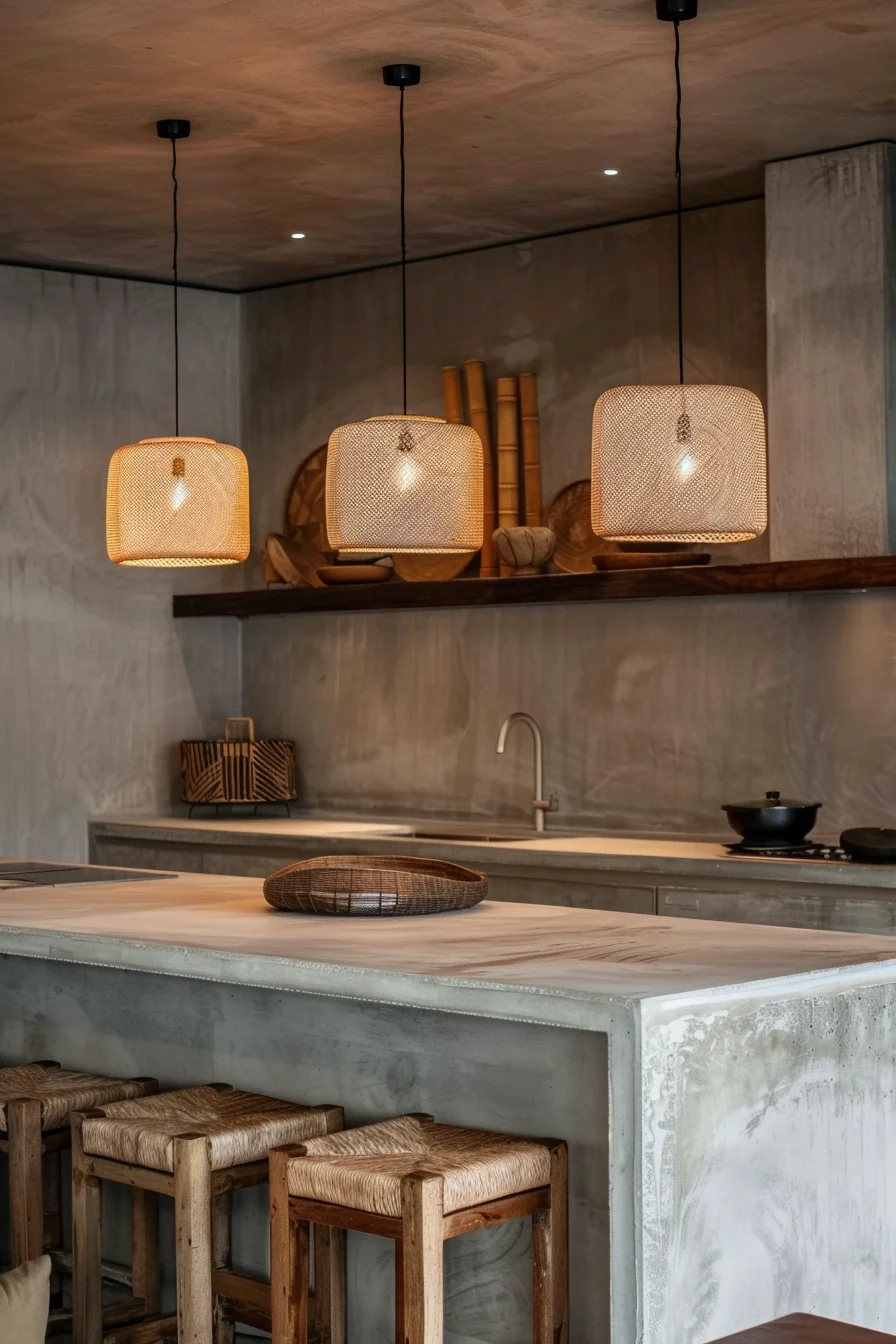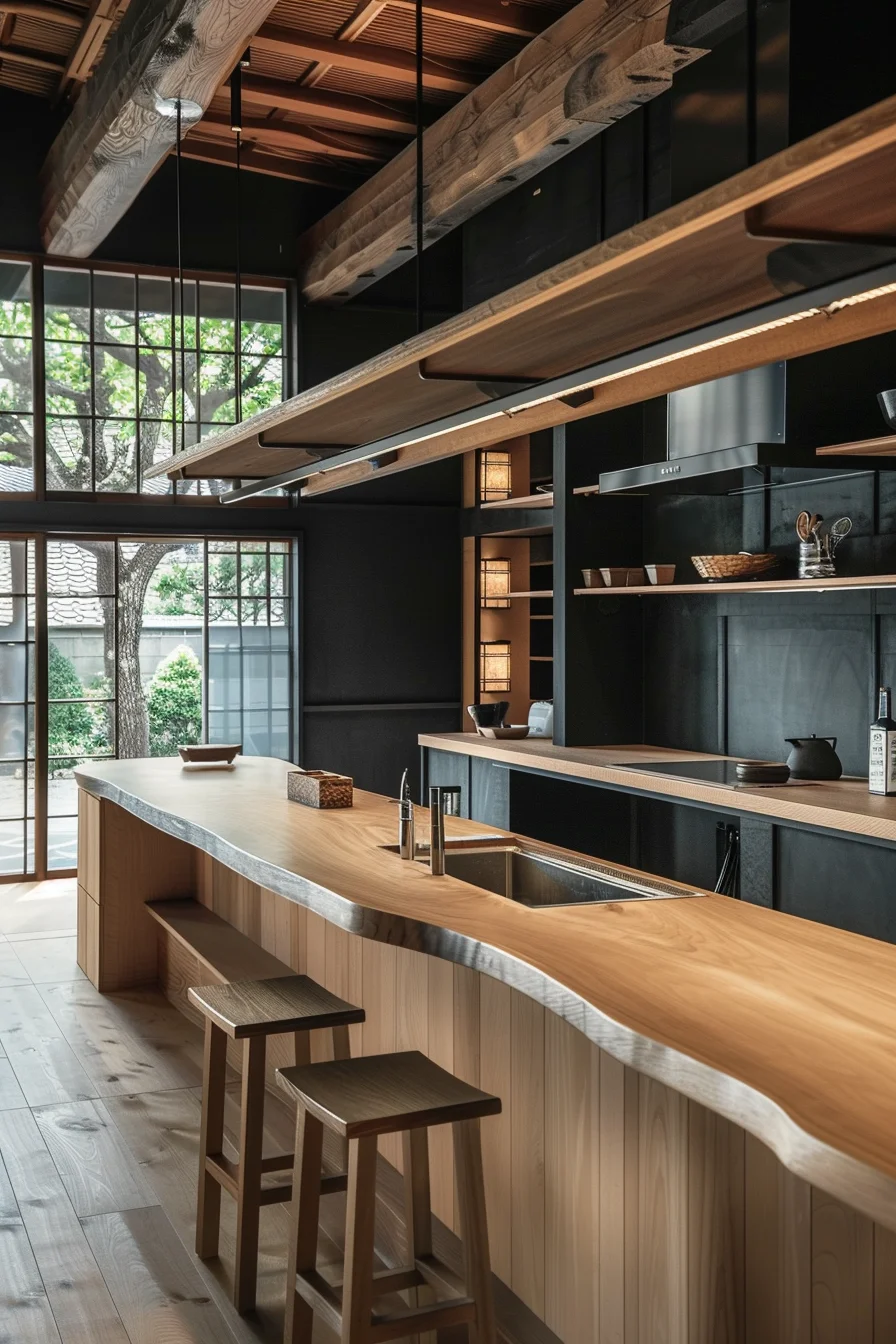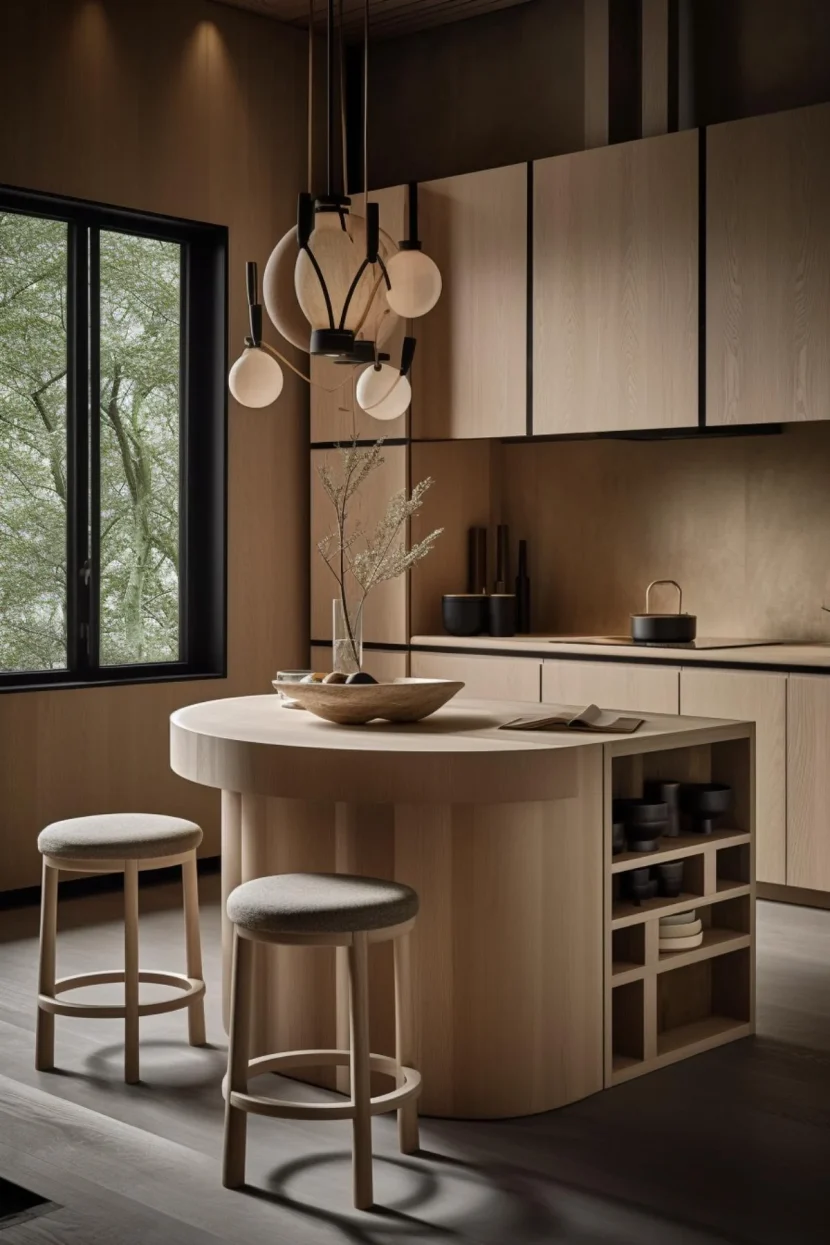Japandi Kitchen Decor: Style And Minimalism
Japandi kitchen decor is a modern and elegant style that blends Japanese and Scandinavian aesthetics into a harmonious, streamlined look. This style is rooted in functionality, simplicity, and a deep appreciation for natural elements, creating a kitchen that is not only practical but visually appealing and timelessly stylish.
Key Elements of Japandi Kitchen Decor
Creating a Japandi kitchen involves incorporating the most cherished elements of both Japanese and Scandinavian aesthetics. Here are the fundamental aspects to consider:
1. Natural Materials and Finishes
Japandi kitchens lean heavily on natural materials, such as wood, stone, and clay. Lighter Scandinavian-inspired woods, like oak or birch, often pair with richer, darker woods commonly used in Japanese interiors. Matte finishes on countertops and cabinetry emphasize the understated elegance that Japandi is known for, while textured stone surfaces add depth and a tactile quality.
2. A Calming Color Palette
The color palette of a Japandi kitchen is intentionally neutral and serene, drawing from natural hues. Earthy tones like soft beige, taupe, and cream create a bright, airy atmosphere, while the addition of darker shades like charcoal or slate gray adds depth. Muted colors highlight the simplicity of the space, making it feel relaxing and unobtrusive.
3. Streamlined and Simple Design
Clean lines and uncluttered surfaces are crucial to achieving a Japandi kitchen aesthetic. Open shelving, sleek cabinets, and handleless drawers contribute to a minimalist, functional space. Simplicity is the essence here, meaning decor and appliances should be kept to a minimum. Open spaces encourage a flow between each element, making the kitchen feel larger, brighter, and less busy.
4. Functional and Thoughtful Layout
The Japandi kitchen emphasizes function as much as form. Every item in a Japandi kitchen should have a purpose, and every feature should serve a function, creating a harmonious flow. By minimizing clutter and maximizing storage, this layout helps cultivate a sense of order and calm, aligning with the “less is more” philosophy that both Japanese and Scandinavian designs advocate.
5. Adding Texture with Woven and Organic Accents
To prevent the minimalist decor from feeling too sterile, Japandi kitchen decor often incorporates woven materials and organic textures. Subtle details like bamboo placemats, wicker baskets, or linen dishcloths bring a touch of warmth. Adding plants, such as bonsai trees or succulents, also helps to incorporate natural texture and a feeling of life into the space.
Why Japandi Kitchen Decor is So Stylish
Japandi kitchen decor is admired for its elegant, timeless look. It transcends fleeting trends by blending two established design styles, each revered for its beauty and functionality. Here’s why Japandi kitchens have become the epitome of style:
- Balance of Warmth and Simplicity: Japandi combines the warm coziness of Scandinavian interiors with the tranquil simplicity of Japanese design. This balance results in a kitchen that feels welcoming yet remains effortlessly sophisticated.
- Emphasis on Quality Over Quantity: In a Japandi kitchen, quality is paramount. The use of high-quality natural materials and craftsmanship over superficial ornamentation ensures a kitchen that ages gracefully. This timelessness is not just a style but a lifestyle—investing in pieces that will last, both structurally and aesthetically.
- Functional Beauty: Japandi kitchens are designed with the intention to be both visually pleasing and highly functional. This approach creates a more mindful, enjoyable cooking and dining experience. Every detail, from the layout to the choice of materials, is meticulously considered, resulting in a cohesive and visually pleasing environment.
Incorporating Japandi Kitchen Decor into Small Kitchens
If your kitchen space is limited, Japandi decor can actually be a perfect solution. The style’s focus on simplicity and functionality makes it easier to create an open, uncluttered look that makes small kitchens feel larger. Here are some tips to adapt the Japandi style in a smaller kitchen:
- Opt for Multifunctional Furniture: Pieces that serve dual purposes—such as a kitchen island that doubles as a dining table—can be practical in a compact kitchen.
- Use Light Colors: Lighter colors will open up the space and make it feel more inviting. A combination of light cabinetry and natural wood can create a warm yet expansive atmosphere.
- Focus on Smart Storage: Built-in shelves, hooks, and vertical storage solutions can help keep everything organized without sacrificing style.
Below Are Some Stunning Japandi Kitchen Decor Styles
